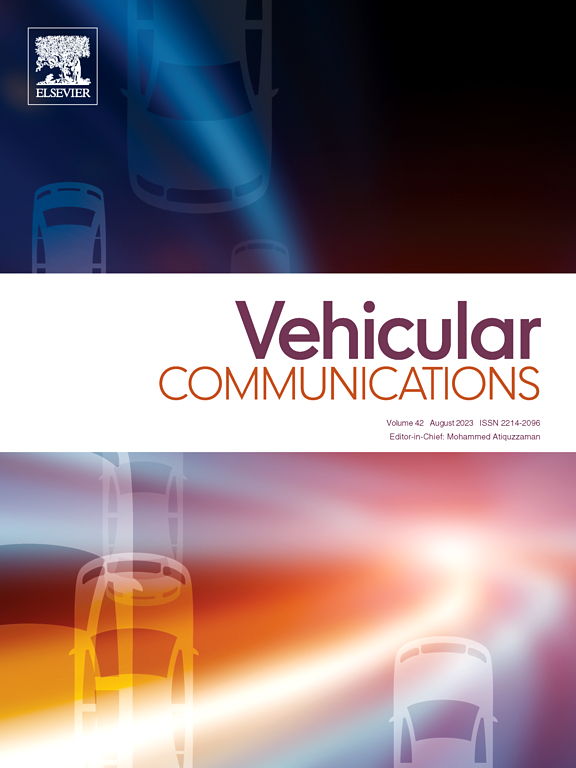基于cle的身份验证密钥协议与车辆到基础设施的puf安全密钥
IF 6.5
2区 计算机科学
Q1 TELECOMMUNICATIONS
引用次数: 0
摘要
车对基础设施(V2I)通信是车辆获取前方道路信息的基础。V2I通信的保密性和可靠性保证了交通的安全和畅通。身份验证密钥协议(AKA)是建立安全通信通道最常用的技术。基于签名的AKA不可避免地暴露了车辆的身份信息,而基于加密的AKA可以带来可否认性和高隐私性,这意味着攻击者无法知道是谁发送了AKA消息。无证书加密可以同时解决繁琐的证书管理和密钥托管问题。然而,现有的无证书加密需要两个松散组合的公钥来表示设备,并且没有考虑在本地存储密钥的物理安全性。本文首先设计了一种改进的一设备一公钥CLE方案,性能比较表明该方案具有最优的存储性能和计算性能。考虑到基于加密的AKA很少投入工作,本文提出了一种可否认且保护隐私的V2I通信无证书AKA,该AKA结合了物理不可克隆功能(physical unclable Function, PUF)安全的密钥管理来防止密钥的物理泄漏,命名为CLE-AKA-PUF。特性对比表明,CLE-AKA-PUF支持免密钥托管、双重认证、物理安全、可否认性和高隐私性。安全性证明和性能分析证明了CLE-AKA-PUF的实用性和有效性。本文章由计算机程序翻译,如有差异,请以英文原文为准。
CLE-based authenticated key agreement with PUF-secured key for vehicle-to-infrastructure
Vehicle-to-infrastructure (V2I) communication is the basis for vehicles to obtain information about the road ahead. The confidentiality and reliability of V2I communication guarantee traffic safety and smooth flow. Authenticated key agreement (AKA) is the most commonly used technique to establish secure communication channels. Signature-based AKA inevitably exposes the identity information of vehicles, while Encryption-based AKA can bring deniability and high privacy, which means no adversary can know who sent the AKA message. Certificateless encryption (CLE) can simultaneously solve burdensome certificate management and key escrow. However, existing certificateless cryptography requires two loosely combined public keys to represent a device and does not consider the physical security of storing secret keys locally. This paper first designed an improved CLE scheme with one-device-one-public-key, and performance comparisons show that the proposed CLE has optimal storage and computation performance. Considering that rare work was put on encryption-based AKA, this paper proposed a deniable and privacy-preserving certificateless AKA for V2I communication by incorporating Physically Unclonable Function (PUF)-secured key management to prevent physical leakage of keys, named CLE-AKA-PUF. Feature comparison illustrates that CLE-AKA-PUF supports key escrow-free, dual authentication, physical security, deniability, and high privacy. Security proofs and performance analysis demonstrate the practicability and efficiency of CLE-AKA-PUF.
求助全文
通过发布文献求助,成功后即可免费获取论文全文。
去求助
来源期刊

Vehicular Communications
Engineering-Electrical and Electronic Engineering
CiteScore
12.70
自引率
10.40%
发文量
88
审稿时长
62 days
期刊介绍:
Vehicular communications is a growing area of communications between vehicles and including roadside communication infrastructure. Advances in wireless communications are making possible sharing of information through real time communications between vehicles and infrastructure. This has led to applications to increase safety of vehicles and communication between passengers and the Internet. Standardization efforts on vehicular communication are also underway to make vehicular transportation safer, greener and easier.
The aim of the journal is to publish high quality peer–reviewed papers in the area of vehicular communications. The scope encompasses all types of communications involving vehicles, including vehicle–to–vehicle and vehicle–to–infrastructure. The scope includes (but not limited to) the following topics related to vehicular communications:
Vehicle to vehicle and vehicle to infrastructure communications
Channel modelling, modulating and coding
Congestion Control and scalability issues
Protocol design, testing and verification
Routing in vehicular networks
Security issues and countermeasures
Deployment and field testing
Reducing energy consumption and enhancing safety of vehicles
Wireless in–car networks
Data collection and dissemination methods
Mobility and handover issues
Safety and driver assistance applications
UAV
Underwater communications
Autonomous cooperative driving
Social networks
Internet of vehicles
Standardization of protocols.
 求助内容:
求助内容: 应助结果提醒方式:
应助结果提醒方式:


